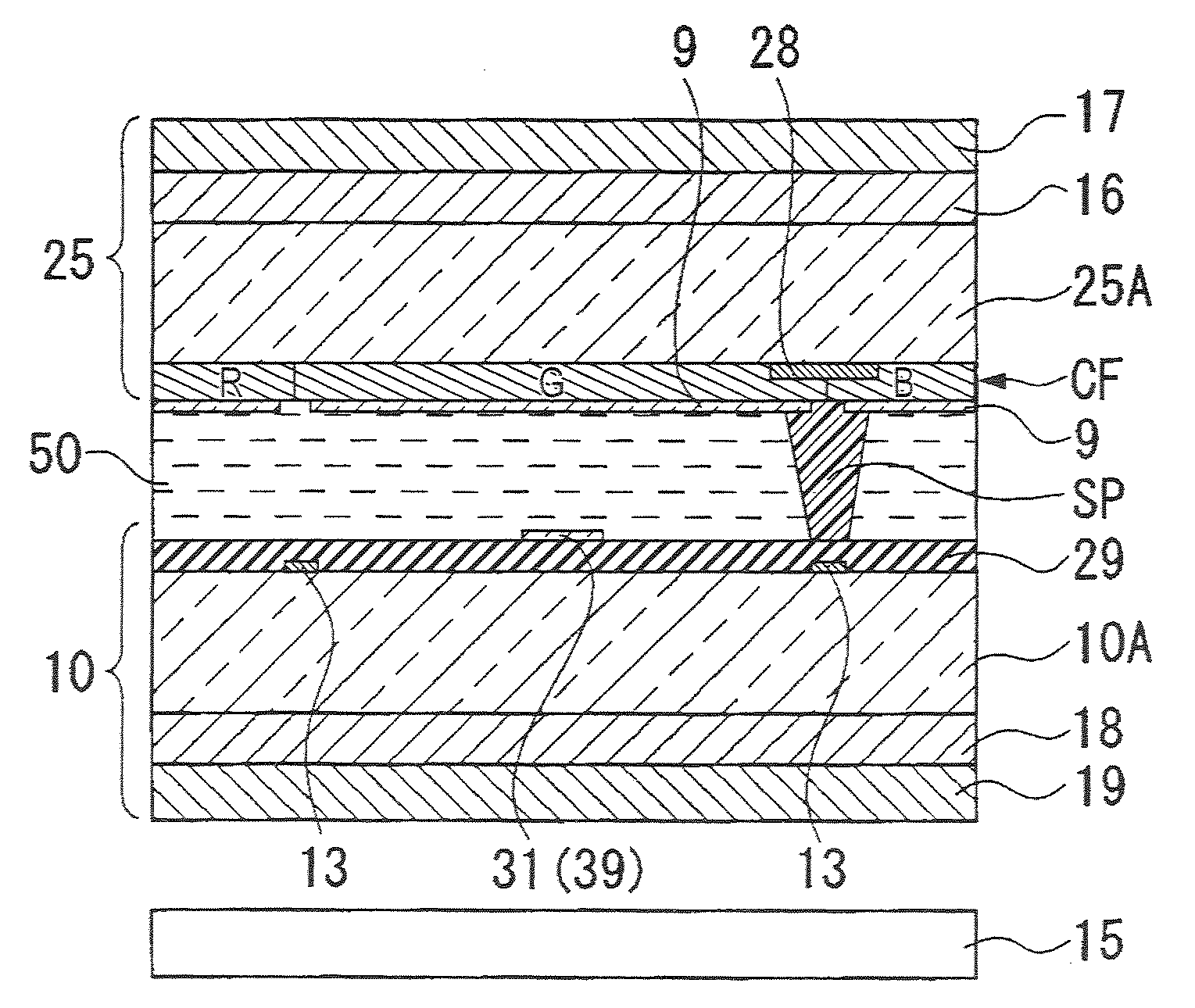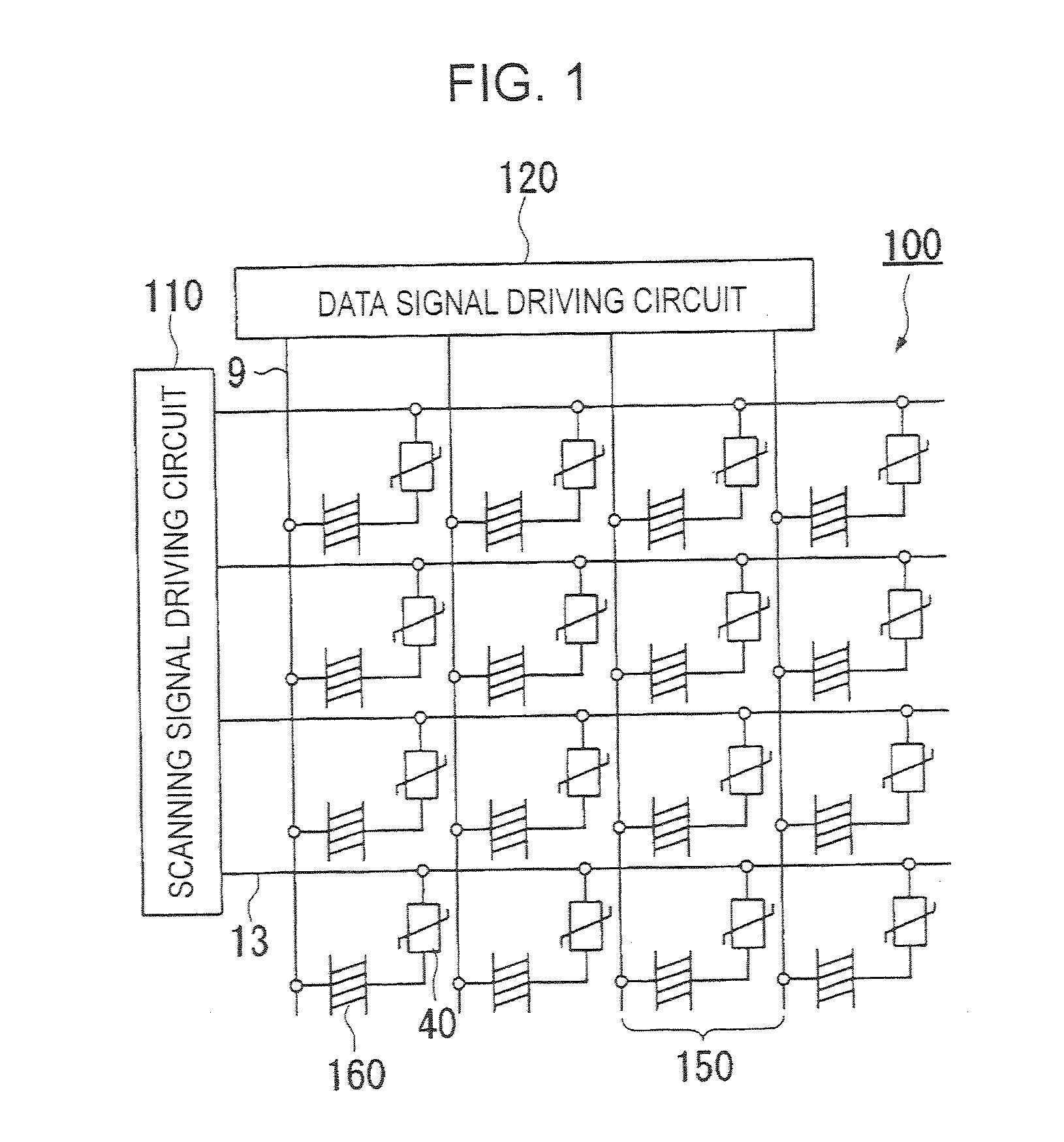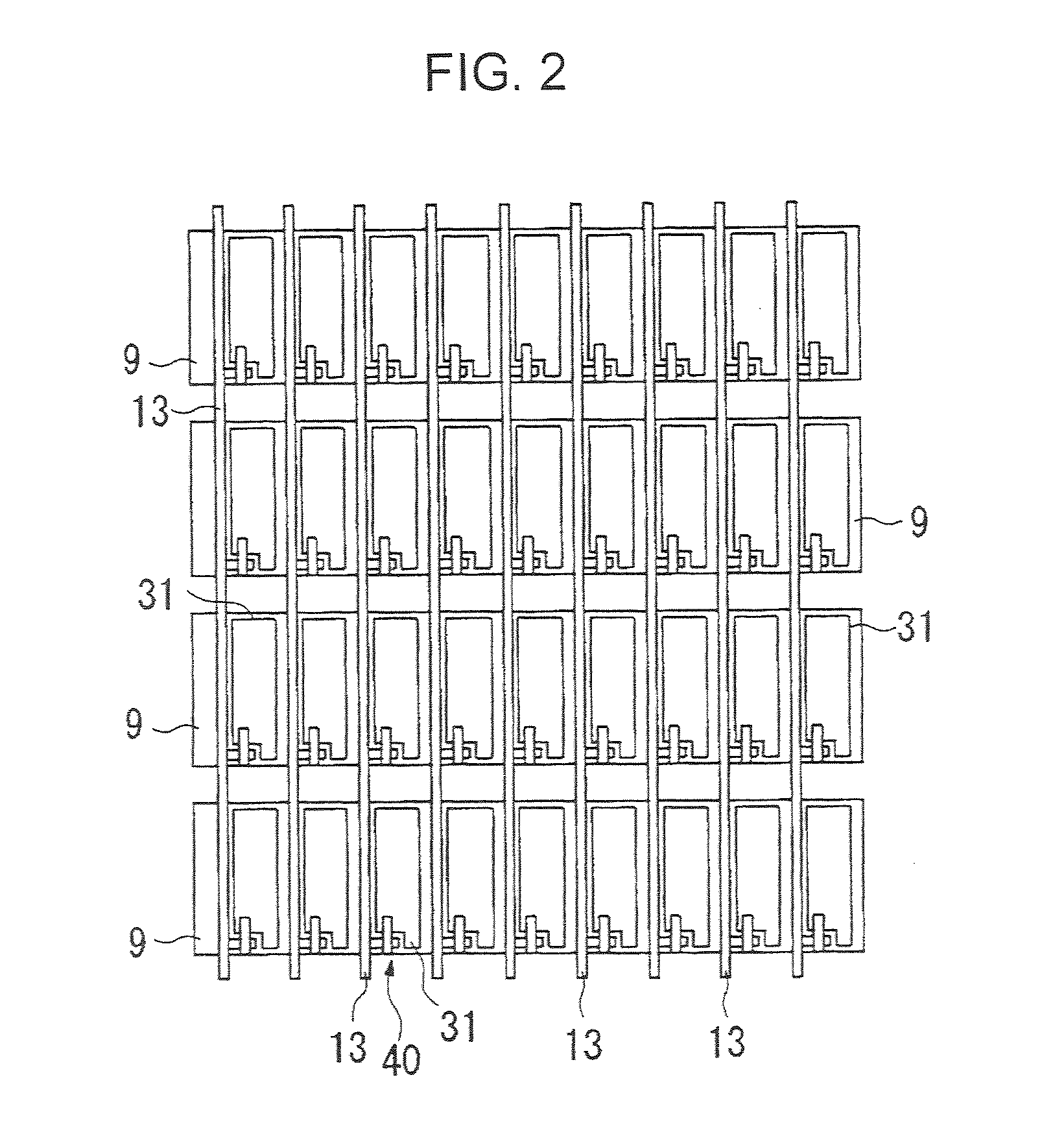Liquid crystal display device and electronic apparatus
a display device and liquid crystal technology, applied in non-linear optics, instruments, optics, etc., can solve problems such as contrast degradation, optical leakage, and display deterioration, so as to prevent or suppress electric field, and prevent liquid crystal molecules from disorienting due to electric field
- Summary
- Abstract
- Description
- Claims
- Application Information
AI Technical Summary
Benefits of technology
Problems solved by technology
Method used
Image
Examples
first embodiment
[0030]Hereinafter, a first embodiment of the present invention will be described with reference to FIGS. 1 to 4. The liquid crystal display device of the embodiment is an example of an active matrix liquid crystal display device using a thin film diode (hereinafter, referred to as a TFD) as a switching element, and in particular, it is an example of a vertically-oriented liquid crystal transmissive display device. Also, the size of each layer or each member is scaled to be different from each other in the drawings so as to allow the layer or the member to be recognizable in the drawings.
[0031]FIG. 1 is an equivalent circuit diagram illustrating the liquid crystal display device 100. The liquid crystal display device includes a scanning signal driving circuit 110 and a data signal driving circuit 120. Signal lines, that is, a plurality of scanning lines 13, and a plurality of data lines 9 intersecting with the scanning lines 13 are disposed in the liquid crystal display device 100, a...
second embodiment
[0049]Hereinafter, the second embodiment according to the invention will be described with reference to FIGS. 5 and 6. FIG. 5 is a cross-sectional view schematically illustrating the pixel configuration of the liquid crystal display device of the second embodiment, and corresponds to FIG. 3 of the first embodiment. In addition, FIG. 6 is a schematic view taken along the line B-B′ of FIG. 5, which corresponds to FIG. 4A of the first embodiment. The basic configuration of the liquid crystal display device of the second embodiment is the same as in the first embodiment, but differs from the first embodiment only in the configuration of the pixel electrode. Accordingly, in FIGS. 5 and 6, the same elements as in FIGS. 3 and 4 are denoted by the same reference numerals, and detailed explanation thereof will be omitted.
[0050]One dot region is divided into three sub-dot regions to constitute the pixel in the first embodiment; however, one dot region is divided into two sub-dot regions S1 an...
third embodiment
[0053]Hereinafter, the third embodiment according to the invention will be described with reference to FIGS. 7 and 8. FIG. 7 is an equivalent circuit view of the liquid crystal display device of this embodiment, and FIG. 8 is a plan view illustrating one pixel of the liquid crystal display device of the embodiment, which is a schematic view corresponding to FIG. 3 of the first embodiment. In addition, in FIG. 8, the same elements as in FIG. 3 are denoted by the same reference numerals, and detailed explanation thereof will be omitted.
[0054]The liquid crystal display device of this embodiment is an active matrix type liquid crystal display device using a thin film transistor (hereinafter, referred to as TFT) as a switching element, and also an example of a vertically-oriented liquid crystal display device.
[0055]In the liquid crystal display device of the embodiment, as shown in FIG. 7, the pixel electrodes 31 and the TFTs 30 serving as the switching elements for controlling the pixel...
PUM
| Property | Measurement | Unit |
|---|---|---|
| dielectric anisotropy | aaaaa | aaaaa |
| thickness | aaaaa | aaaaa |
| electric fields | aaaaa | aaaaa |
Abstract
Description
Claims
Application Information
 Login to View More
Login to View More - R&D
- Intellectual Property
- Life Sciences
- Materials
- Tech Scout
- Unparalleled Data Quality
- Higher Quality Content
- 60% Fewer Hallucinations
Browse by: Latest US Patents, China's latest patents, Technical Efficacy Thesaurus, Application Domain, Technology Topic, Popular Technical Reports.
© 2025 PatSnap. All rights reserved.Legal|Privacy policy|Modern Slavery Act Transparency Statement|Sitemap|About US| Contact US: help@patsnap.com



